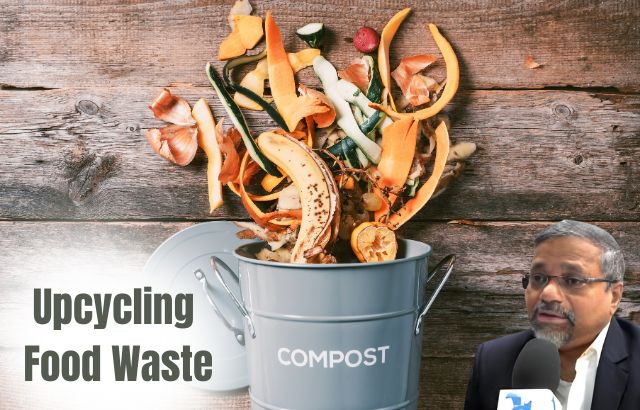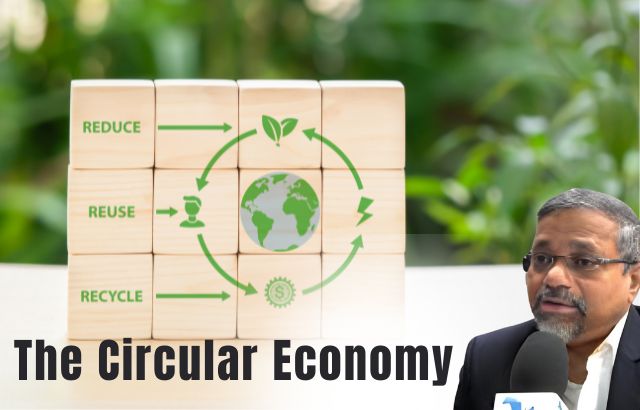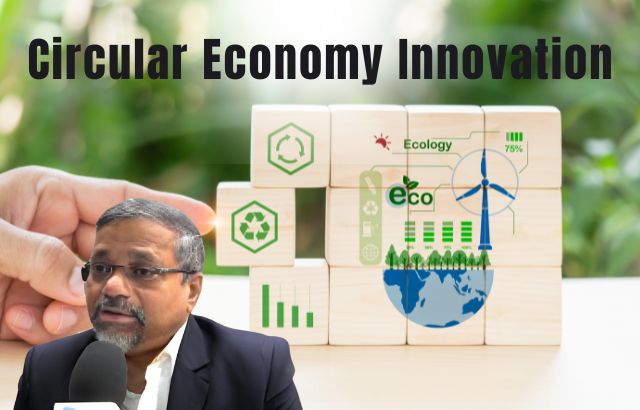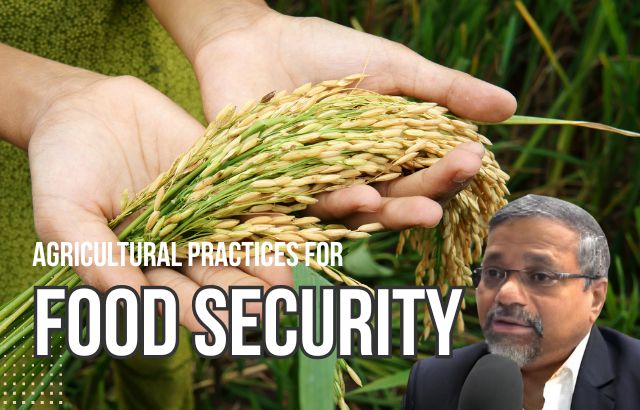The world is facing environmental challenges at an unprecedented scale. Climate change, resource depletion, and waste accumulation are among the most pressing concerns. Green innovators are stepping up with solutions that shift away from the traditional linear economy — which follows the “take, make, dispose” model — toward a circular economy that promotes sustainability by rethinking product lifecycles.
In this blog, we will explore the circular economy concept, provide examples, discuss the roles of green innovators, and highlight real-world calculations, particularly from the perspective of agriculture innovator Jaiguru Kadam. Let’s dive into how this transformative approach is shaping a greener future!
What is the Circular Economy?
The circular economy is based on three fundamental principles:
- Designing for Longevity: Products are designed with durability, repairability, and upgradeability in mind, ensuring that they last longer.
- Reuse and Refurbishment: Instead of throwing away used goods, they are reused, refurbished, or repurposed.
- Recycling and Regeneration: At the end of their life, materials are recycled, regenerated, and kept in circulation for as long as possible.
This shift away from linear consumption to a circular flow not only reduces waste but also promotes efficient use of resources, lowers carbon footprints, and drives economic opportunities for businesses.
Role of Green Innovators in Circular Economy

Green innovators are at the heart of driving change in the circular economy. Their work involves creating sustainable solutions, developing new technologies, and promoting practices that align with the principles of circularity.
Key roles of Green Innovators:
- Designing Sustainable Products: Green innovators focus on designing products that can be easily repaired, reused, or upgraded. This may include creating modular designs for electronics or developing eco-friendly packaging materials.
- Developing Recycling Technologies: Innovations in recycling processes, such as efficient material sorting and advanced chemical recycling, ensure that materials can be reintegrated into the supply chain.
- Promoting Sustainability Practices: Green innovators advocate for the adoption of sustainable practices in industries, from fashion to electronics, by providing guidance on material sourcing, energy efficiency, and waste management.
- Educating Communities: Educating consumers and businesses about the importance of waste reduction and sustainable consumption is crucial. Green innovators offer training, workshops, and platforms to promote these practices.
Examples of Circular Economy in Action

1. Circular Agriculture (Jaiguru Kadam’s Innovations)
Jaiguru Kadam, a leading innovator in agriculture, focuses on creating circular models for the agricultural sector. He designs solutions that reduce agricultural waste, promote soil health, and recycle organic waste into valuable products. For example, Kadam has introduced an innovative method where agricultural waste, like crop residues, is transformed into compost or biogas, reducing reliance on chemical fertilizers and contributing to carbon sequestration.
- Waste-to-Resource: Crop residues and waste products are converted into organic fertilizers or bioenergy, closing the loop of agricultural production.
- Soil Regeneration: Kadam has also designed systems that recycle nutrients back into the soil, reducing the need for synthetic inputs and improving crop yields.
2. E-Waste Recycling in Electronics
An example of a successful circular economy model in the tech industry is Fairphone. This company produces smartphones that are designed to be easily disassembled, so their components can be reused or recycled. They even offer a repair service for broken parts, extending the lifespan of their devices. By focusing on modularity and durability, Fairphone reduces electronic waste and promotes a more sustainable lifecycle for tech products.
3. Fashion Industry – Patagonia’s Recycled Materials
Patagonia, the outdoor clothing company, is a pioneer in promoting circular economy practices in fashion. Their initiative called “Worn Wear” encourages customers to buy used items or repair their gear instead of buying new ones. They also use recycled materials in their products, further reducing the environmental impact of the fashion industry.
Intriguing Statistics and Fascinating Facts
- Circular Economy Potential: The Ellen MacArthur Foundation reports that adopting a circular economy could generate $4.5 trillion in economic benefits by 2030.
- Global E-Waste: In 2020, the world generated over 53.6 million metric tons of e-waste, yet only 17.4% was recycled properly (Global E-Waste Monitor).
- Agricultural Waste: In the U.S. alone, approximately 30-40% of the food supply is wasted, most of which ends up in landfills, emitting methane. Innovations like composting and anaerobic digestion can turn this waste into valuable resources.
Sample Calculations from Jaiguru Kadam’s Agricultural Innovations

- Waste-to-Compost Conversion:
- Assumption: A farm generates 1000 kg of crop residue per month.
- Conversion: Using Kadam’s composting technique, 80% of this residue can be converted into organic compost.
- Result: 1000 kg x 80% = 800 kg of compost can be produced monthly, which can then be used to fertilize the farm, reducing the need for chemical fertilizers.
- Biogas Production from Agricultural Waste:
- Assumption: 500 kg of crop residue can be processed into biogas daily.
- Conversion Efficiency: 1 kg of crop residue produces 0.6 cubic meters of biogas.
- Result: 500 kg x 0.6 m³ = 300 cubic meters of biogas daily. This can be used for cooking or powering equipment, reducing fossil fuel use.
Frequently Asked Questions (FAQs): Ask Jaiguru

1. What are the main benefits of the circular economy?
- The circular economy reduces waste, conserves resources, and lowers carbon emissions. It also creates economic opportunities by encouraging innovation, creating jobs in recycling and repair industries, and improving resource efficiency.
2. How can businesses transition to a circular economy?
- Businesses can adopt circular practices by designing products for reuse, investing in recycling technologies, collaborating with other organizations to share resources, and educating their customers about sustainable practices.
3. Is the circular economy only for large corporations?
- No, circular economy practices can be applied by businesses of all sizes. Small businesses can adopt circular principles by using recycled materials, offering repair services, and reducing waste in their operations.
4. Can circular economy principles be applied in agriculture?
- Yes, agriculture is one of the most significant sectors benefiting from the circular economy. Through practices like composting, waste-to-energy solutions, and regenerative farming, the agricultural industry can reduce waste and promote sustainability.
Conclusion
The circular economy offers a holistic, sustainable alternative to the traditional linear economy. By embracing innovation in design, recycling, and waste management, industries can dramatically reduce their environmental impact and help build a more sustainable future. Green innovators like Jaiguru Kadam are leading the way, demonstrating that circular principles can be applied across diverse sectors, from agriculture to electronics. The shift toward a circular economy is not just a trend but a transformative movement with the power to reshape industries and drive a greener, more prosperous world.
Let’s all take part in this change — reducing waste, conserving resources, and thinking in cycles, not lines.











